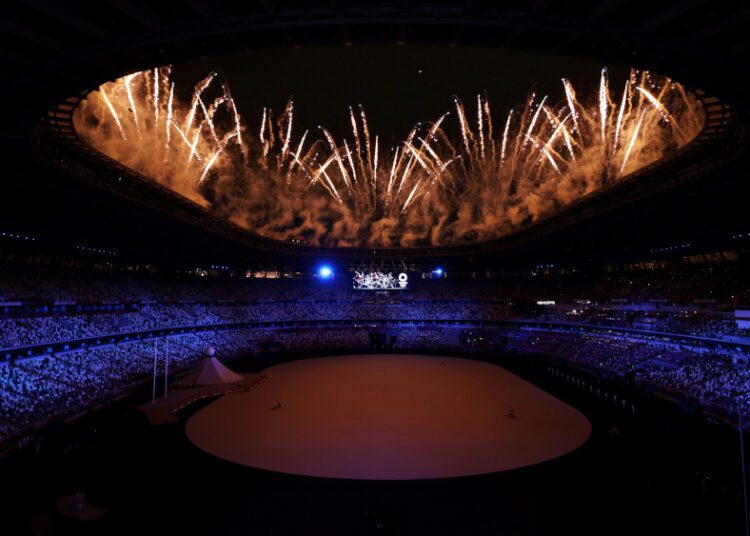TOKYO — The rising of the Japanese flag and the singing of the national anthem is the first moment of stillness. Devoid of external commentary, before a sea of empty stadium seats, it is a stark reminder of the pandemic, according to Reuters.
More than any of the previous symbols of the “apart but not alone” theme, this image reinforces the optimism (misplaced for some, hopeful for others) of continuing with the games despite the obstacles wrought by the pandemic.
Olympic opening ceremonies come with certain expectations: large-scale choral movement, overhead camera work (Busby Berkeley on steroids) and fireworks. This year’s ceremony ticks all these boxes. According to the commentators, there are 694 fireworks in the opening moment alone.
The Tokyo artistic programme is an eclectic mix of animation, live-action and pre-recorded performers. Stylised virtuosic performers combine with regular folk doing regular movement.
Heavy with symbolism, Channel Seven’s commentators leave little room for the viewer’s imagination. From the opening image of a blossoming seed, every symbol is explained.
Performed under stadium-spectacular lights and music in front of a giant glowing effigy of Mount Fuji, the programme is a series of discrete sequences.
A stylised ensemble routine of building accompanied by a traditional work song morphs into a troupe of tap dancers.
An integration of ancient and contemporary, and the interplay between the individual and the ensemble, reverberates throughout the ceremony. A single violinist tuning up is gradually joined by other musicians to become an orchestra.
It is a fitting parallel to the coming together of the world’s athletes to create the Olympics.
The parade of athletes is a sweetly shambolic affair. 205 nations later, the artistic programme resumes with its diverse snapshots.
Here’s an ensemble of clowns portraying the world’s media; now here’s some dancing children moving colourful boxes. Look up in the sky, there’s a ball of 1824 drones of light transforming into a rotating globe! Now, here’s some children, representing Asia, singing the Lennon/Ono classic Imagine.
But wait, beamed in from some heavenly white void now they’re joined by Angelique Kidjo representing Africa, then Alejandro Sanz for Europe, John Legend for the Americas and finally, Keith Urban for Oceania.
Less of a linear narrative than previous opening ceremonies, this is a series of isolated, discrete sections. Less a celebration of the host country (although it’s unmistakably Japanese in tone and style) this eclectic mishmash of styles and performances becomes a durational performance where you can wander in and out.
The official speeches prior to the formal opening reference “the unifying power of sport”, the inclusion of refugee athletes and the adaption of the International Olympic Committee’s motto Faster, Higher, Stronger to include the word Together.
Together speaks to a world lingering in the residue of Covid-enforced separations. Given the austerity of the times the ceremony is relatively subdued, but the optimism of the speeches is matched by the overriding exuberance of the performers. Not drowning, but waving (and there is lots of waving).
There’s no room for cynicism; only high-pep energy. The ceremony is very genki (a Japanese word without a direct English translation, roughly meaning “energy” or “pep”), slightly kitsch, but presents a surprisingly diverse representation of contemporary Japan.
The brightest spot in the post-parade section is an animated performance of pictogrammes depicting fifty sports. Moving the pictogrammes from two to three-dimensions via a kind of human-puppetry meets real-life stop-motion animation, it is equal parts hi and lo-fi and totally camp.
Its complete weirdness makes it un-look-away-able, as minor human errors show it for what it is: real people in real time, operating within a framework of precise choreography smashed up against the reality and vagaries of live performance.






Discussion about this post